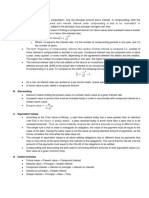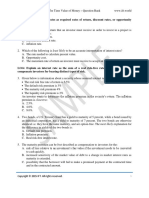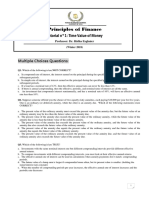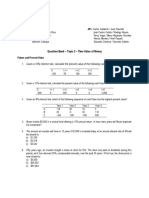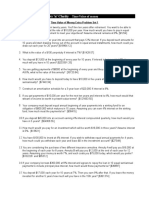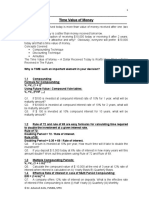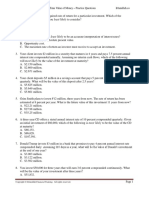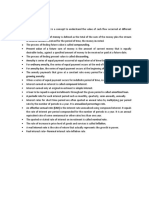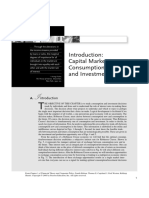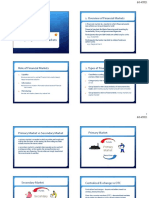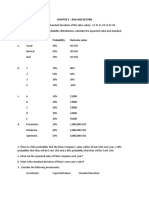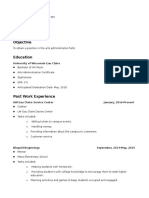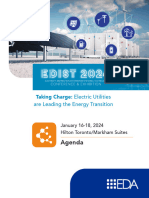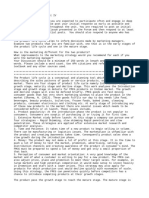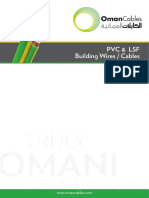0% found this document useful (0 votes)
73 views3 pagesChapter 3 - Practice Problems
This document contains 10 practice problems related to time value of money concepts. The problems cover topics like calculating future values of investments with different interest rates and compounding frequencies, determining investment amounts needed to reach a future value, and calculating bond prices. The problems provide calculations and scenarios to help students practice applying time value of money formulas.
Uploaded by
Thuyển ThuyểnCopyright
© © All Rights Reserved
We take content rights seriously. If you suspect this is your content, claim it here.
Available Formats
Download as PDF, TXT or read online on Scribd
0% found this document useful (0 votes)
73 views3 pagesChapter 3 - Practice Problems
This document contains 10 practice problems related to time value of money concepts. The problems cover topics like calculating future values of investments with different interest rates and compounding frequencies, determining investment amounts needed to reach a future value, and calculating bond prices. The problems provide calculations and scenarios to help students practice applying time value of money formulas.
Uploaded by
Thuyển ThuyểnCopyright
© © All Rights Reserved
We take content rights seriously. If you suspect this is your content, claim it here.
Available Formats
Download as PDF, TXT or read online on Scribd
/ 3


